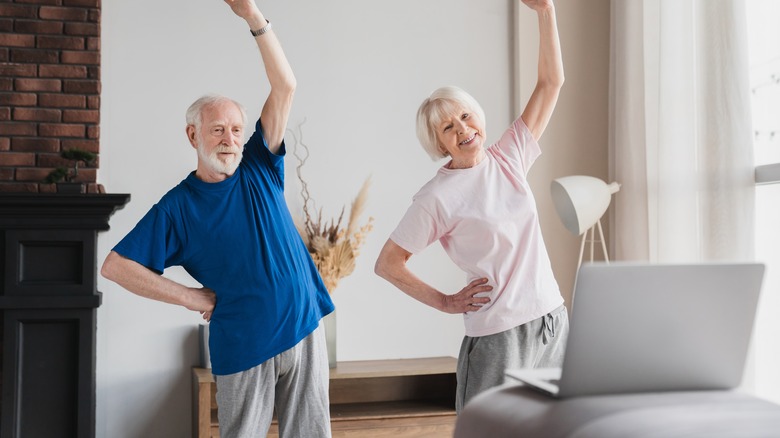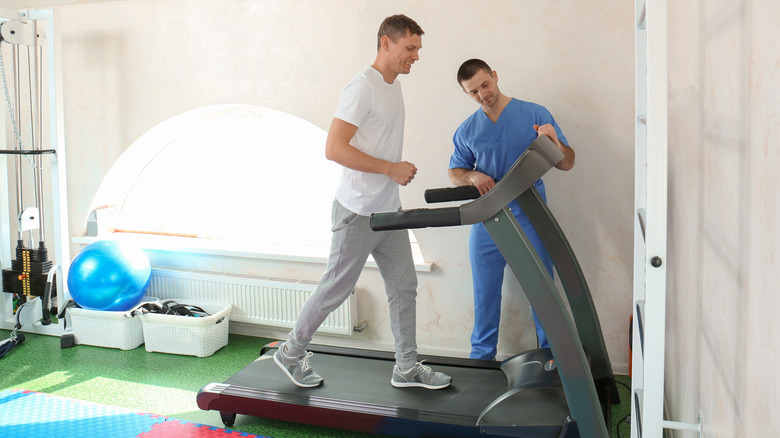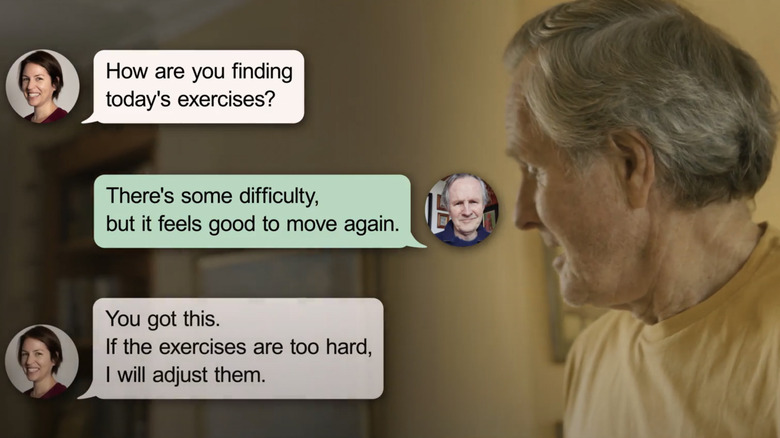Physical Therapist Stephanie Wakeman On Functional Movement, Gait Analysis, And Virtual Physical Therapy - Exclusive
Dr. Stephanie Wakeman always knew that she wanted to work in healthcare, but it took her a while to find her passion for physical therapy. She started her career working in the pharmaceutical industry as a research assistant, but found that she didn't want to be trapped in a lab all the time. So, Wakeman went back to grad school and pursued a degree in physical therapy, inspired by her love of movement.
Wakeman loved the one on one aspect of physical therapy, especially helping people get back to the physical activities that they loved after an injury. As her career progressed, she uncovered a passion for using technology to make healthcare more accessible and improve patient outcomes. When she started helping patients via telemedicine platforms, Wakeman knew she'd found her niche.
Wakeman is now the clinical manager at OneStep, a physical therapy app that not only connects patients with excellent physical therapists, but also analyzes their movements to help their virtual physical therapist develop an individualized plan. In this exclusive interview with Health Digest, Wakeman explained how OneStep works, how virtual therapy can help people recover from and prevent injuries, and why functional movement should be part of everyone's movement routine.
The benefits of physical therapy
Can you tell us a little about your background and why you chose to pursue physical therapy?
I started my career as a research assistant in the pharmaceutical industry. I've always been intrigued by science and medicine, so this path seemed obvious to me at first. However, I realized I really wanted to spend more time with people and less time in a lab, so I returned to grad school to pursue a degree in physical therapy. I chose physical therapy over other healthcare careers because I loved dance and movement. I recognized that exercise was the "fountain of youth" and wanted to share that knowledge and passion with others.
I have been privileged to work in many facets of the physical therapy world. I found the most joy working in a mostly orthopedic setting, helping people of all ages and abilities get back to doing the activities they love. However, I've always been intrigued by new technologies in medicine and longed to find ways to incorporate this knowledge into physical therapy.
Luckily, after a couple years of seeking out new ways to practice and networking with a variety of professionals, I landed my first position in telehealth a few years ago. That opportunity connected me with OneStep and I'm thrilled to have an active role in marrying innovation with best practices in healthcare.
How can physical therapy help people even if they don't have a specific injury?
Physical therapists are movement experts and some of us have additional training in specialty areas such as pelvic health, vestibular or inner ear dysfunctions, health prevention, strength and conditioning and even certifications from Titlest to improve your golf swing! A physical therapist can help you prepare for a competitive event, evaluate your strength and balance for injury and fall prevention, address chronic pain, and develop an exercise plan to help you get through your normal day with greater ease and improved vitality.
Improving daily movements
Why is functional movement so important for keeping your body healthy and strong?
Physical therapists look at movement as a window into your health. For example, there have been studies that correlate a loss of specific movement patterns to higher rates of early mortality in a large population of people. Although correlation is not causation, we know that when we lose the ability to perform tasks, like getting up from the floor, it is an indirect measure of strength and mobility, which ultimately corresponds with functionality. When we lose the ability to perform basic tasks, we start moving less. When we move less, we slowly enter into a downward spiral of negative health events.
What kinds of daily movements do many of us do inefficiently that can lead to injuries?
Most of us don't hinge from our hips properly, causing us to utilize the low back muscles more than necessary. This faulty movement pattern is the source of a lot of back pain because we end up putting a lot of undue stress on the ligaments and smaller muscles of the back, instead of utilizing the large and powerful muscles of our buttocks and legs.
How can gait analysis help people improve the way they move? How can gait analysis help prevent injuries?
When we look at specific parameters or values of the walking cycle over time, we can determine if you are favoring one leg over the other, or if you have inconsistencies in your step. We then address these problem areas and optimize your weight distribution and alignment to help stave off muscular inefficiencies that can cause conditions, such as strains and sprains.
Analyzing gait trends can also help determine fall risk and initiate a response that can mitigate a fall or unstable gait. At OneStep, we've developed the technology to analyze gait from a walk using your smartphone through algorithms to detect when your walk trends toward a pattern of fall risk.
Physical therapy at home with an app
How can the OneStep app help people with chronic pain or injuries who need physical therapy? How does the app gather actionable data without motion trackers?
OneStep's technology uses sensors in the smartphone to analyze gait. As you walk with the phone in your pocket, the phone moves, and those motions are mathematically translated into specific motions of the gait cycle. A trained physical therapist then analyzes these parameters and makes inferences about the stability and consistency of your walking pattern.
How is telehealth changing access to physical therapy? What are the benefits of telehealth physical therapy for the patients and the physical therapist?
Telehealth improves the access to physical therapy by making the recovery process much more convenient and allowing the physical therapist to track your daily progress. In a traditional in-person setting, you have to make arrangements around work and family, drive to an office, wait for your appointment and repeat the process a couple of times a week.
The best part about telehealth is that you don't have to leave your home or office. At your convenience, your exercises can be performed at home or the gym and will be tracked by your physical therapist. Telehealth allows for ongoing communication with your physical therapist daily to address questions and concerns immediately. These are the perks of digital health that are not available with in-person care.
To download the OneStep app, please visit the Android or Apple app stores.
This interview has been edited for clarity and formatting.




